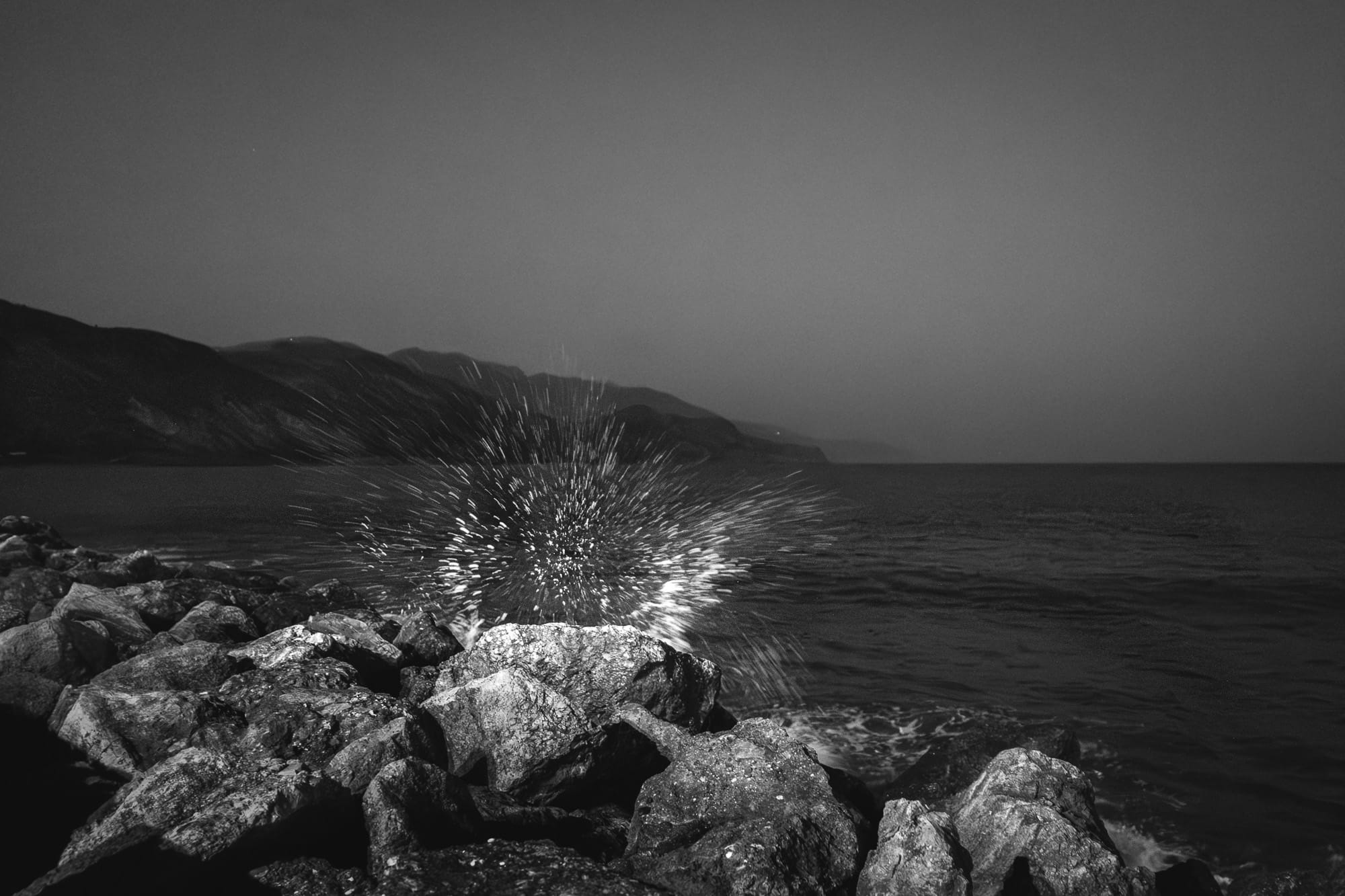Hello to you, dear readers of my Subvrt newsletter. I’m in Paleochora, Crete, the south-west edge of the island. A stop for young wanderers, crag-faced seekers and other passers-through, where I’m spending the waning days of the Easter break.
![[+]](https://mehrankhalili.com/content/images/2025/04/DSCF0457-1.jpeg)
Until I got here I hadn’t realised how much I’d missed real nature. Not the bees-on-your-balcony-flowers kind or the giant-fig-tree-in-the park kind, but the extreme kind, when gusts make the grasses dance in the sunset on a headland between two seas (that was last night, and the photos are in this post).
Today I swam in the frigid Libyan Sea, gasping for breath and then suddenly warm, elated, renewed. I ate fresh swordfish and boiled greens for the same price as a McMeal, and meditated from a hilltop for the first time in months without wanting a break.
So yes, I’ve been indulging in nature. BUT I’ve also been thinking about AI.
A film director friend told me how it’s shaking up his industry in every way possible, from pitches to post-production. And it got me wondering: AI is progressing fast on its mission to change how we work, live, think. Even the free version of ChatGPT handles most tasks — and €20/month gets you much more.
So how are people using it to advocate for causes, to push for change, to confront power?
Here’s what I found, along with a few ways I’ve been using it myself. And at the end, some thoughts on what this all means.
![[+]](https://mehrankhalili.com/content/images/2025/04/DSCF0460-1.jpeg)
Content creation
AI is already making written material for campaigns. A few weeks ago, a single activist in the US used ChatGPT to produce the literature for an entire movement against Walmart.
But as the models have evolved to include image generation, movements are also using AI to make creative materials. Like posters, flyers, social media graphics or memes. Make me an image of a group of young protesters uniting, in the style of a vintage poster.
The hard right, by the way, are all over this.
Message tailoring and targeting
Many organisers use AI to scale up their efforts by tweaking their materials for different audiences. They’ve successfully used AI to break down language barriers. (Old school translation teams are now much less necessary.)
But organisers can also use AI to target messaging beyond language — rewrite this manifesto for an older audience — and massively extend their reach.
Research
A lobbyist friend told me how ChatGPT streamlines her entire workflow.
The chatbot first identifies weak spots in her clients’ policy proposals, and proposes edits to make them tighter. Then, it provides lists of decision makers that she could be reaching out to. And finally, it gives her messaging tips based on the public statements and pressure points of those decision makers.
Personally, ChatGPT helps me with background research for the livestreams and interviews for DiEMTV. It’s a real time-saver.


Paleochora, Crete (April 23, 2025)
Brainstorming and campaign planning
But this, dear friends, is the part where AI still blows me away: developing campaign plans. I sense these tools are being massively under-used here.
An example. Last week, I saw polling on how public opinion around Europe has cooled on the Israeli state since October 7. So I asked ChatGPT how to push it further, widening the Overton window to enable criticism of Israel’s policies in mainstream discourse.
A few prompts later, it gave me a full media and influencer campaign — targets, messaging, timelines, metrics, even historical precedents. It wasn’t perfect. But it was a better starting point than most teams could draft in days.
The bottom line: if you’re an organiser who’s jumping straight to execution without a plan, you’re wasting your time. But if you’re planning without using AI, you’re wasting even more.
Final thoughts
- Boy, that playing field is getting levelled. For now, we have access to the same superpower as political elites and Silicon Valley billionaires. But I doubt that will last forever. Use them while you can.
- For research and planning, ChatGPT’s Deep Research is the killer app today, and that’s included in the €20/month subscription. As of writing, you get 10 queries. It’s worth every cent.
- Yes, AI can plan, draft, and even automate. But it’s still on us to think critically and act. Using it as an assistant, keeping its content at arms length = good; outsourcing your thinking to it entirely = very bad. (Sam Kahn has some interesting thoughts here.)
- Since AI is about to upend everything, why aren’t we teaching kids how to use it properly? Especially, you know, how not to lose themselves in it?
Wild, exciting, scary times.
Good luck with your (AI-assisted) projects, and see you next week,
Mehran


